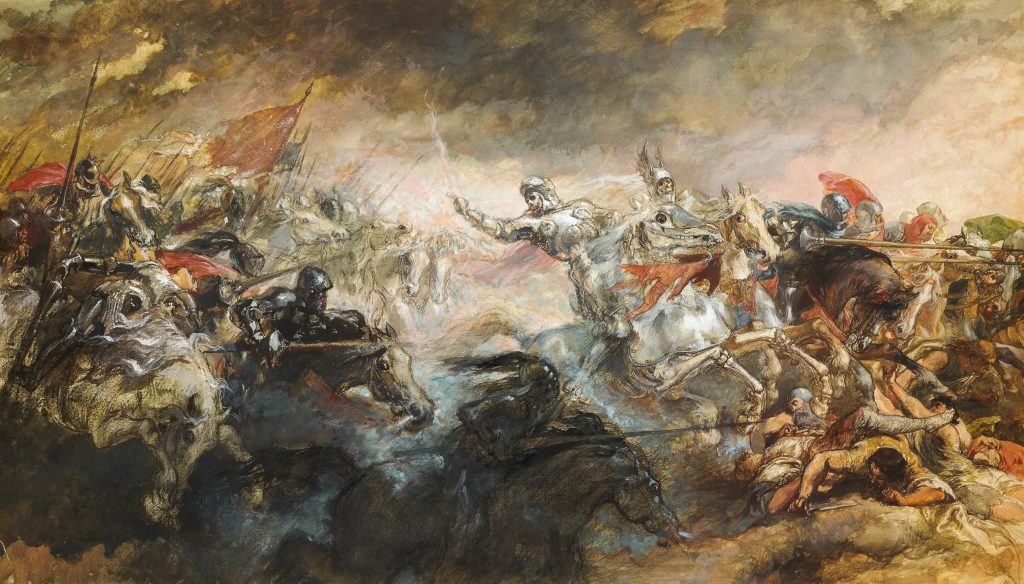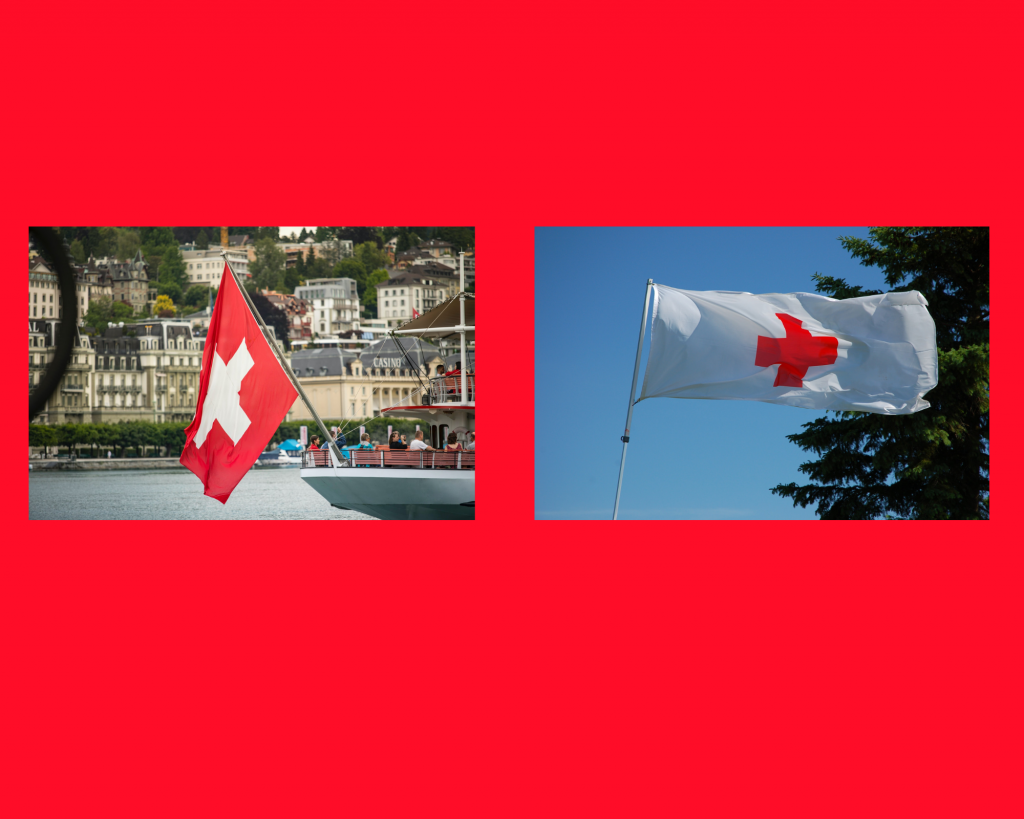Each country has its own national symbols. The national anthem, flag, coat of arms, among others, are what countries and their people hold close to their hearts. While each of them adds a unique value to the country, the flag is a symbol unique to every nation, carefully designed and chosen at a significant point in history.
Each flag is associated with the country’s journey, from the moment it was just an idea up to the point where it became the official symbol of liberty. The Swiss flag as well had its tumultuous journey through civilized history. It represents the struggles that the Swiss had to overcome on their road towards independence.
That is why we’ll be taking a trip back in time together to see what makes this flag special, how it came to be, what it represents, and how it’s seen today.
The Complicated History of the Swiss Flag
Like any other country that has gone through different periods of civilization, Switzerland has its own long and complicated history. In this section, we’ve highlighted a few significant moments in history associated with the flag and when it was formally chosen as the official Swiss flag.
Early 12-14 centuries

During this period, Switzerland was divided into provinces, also known as cantons. Each canton operated independently with its own flag and coat of arms. However, during these centuries, the cantons were all part of the Holy Roman Empire.
This bit is important since most historians agree this is where and when today’s flag originated. The Holy Roman Empire had the power to grant the countries under its rule permission to operate under a special symbol during the war. The Emperor permitted the canton of Schwyz to operate under the white cross, which was considered a symbol of Christ’s weapons, alongside their original red banner. So, a red banner plus a white cross equals today’s flag design.
Fun fact, the Canton of Schwyz is also the originating place for the country’s name today.
The Old Swiss Confederacy
 The formation of this federation was mentioned many times throughout history; however, the most likely correct date is pinpointed in 1291. Initially, only three cantons were a part of the confederacy; Uri, Schwyz, and Unterwalden. These cantons worked together as a whole, though they still operated under separate symbols. In the latter years, the federation expanded until there were eight cantons, then there were 13 cantons until the number reached 26. To this day, Switzerland still has 26 cantons. The foundation of the Confederacy is important as later on, it becomes associated with the symbol of the flag after the Battle of Laupen.
The formation of this federation was mentioned many times throughout history; however, the most likely correct date is pinpointed in 1291. Initially, only three cantons were a part of the confederacy; Uri, Schwyz, and Unterwalden. These cantons worked together as a whole, though they still operated under separate symbols. In the latter years, the federation expanded until there were eight cantons, then there were 13 cantons until the number reached 26. To this day, Switzerland still has 26 cantons. The foundation of the Confederacy is important as later on, it becomes associated with the symbol of the flag after the Battle of Laupen.
The Battle of Laupen
In 1339, the Old Swiss Confederacy joined Bern to fight against Habsburg, known today as the Battle of Laupen. Bern and the Confederacy were victorious, and soon after, Bern joined the confederacy. Because the cantons were still operating with their own coat of arms and flags, it became difficult to tell apart enemies from allies during the battle. There are different sources of how the symbol came to be. Still, the most reliable one is that the soldiers within the confederacy sewed the white cross’s symbol in their uniforms. This way, the soldiers were able to recognize their own people.
The Helvetic Period
Unfortunately, the white and red flag wasn’t always present throughout history. In 1798, the flag adopted by the cantons was abolished. This is due to the fact that Napoleon and French troops marched into Switzerland and demolished the independent system of the cantons and its symbols. Napoleon introduced a three-colored flag and coat of arms to symbolize Switzerland’s operation as a whole under one law and government. But, this flag was not used once the Helvetic Period ended.
The Official Symbol
Finally, after years of not having a unified flag, in 1848, the country decided to incorporate the flag in the constitution. It was then that it was officially set as the national flag of Switzerland. As we already talked about, the primary colors of the flag are white and red. The white cross in the center of the flag has arms that have equal length. They are one-sixth longer than they are broader. There is still debate going on about the origin of the red color used in the flag. Some believe that it symbolizes the blood of Christ, whereas some assume that it represents the color of the old Bernese flag.
One unique feature of the Swiss flag is that unlike other flags in the world, which have a rectangular shape, this particular flag is square-shaped. It’s one of the two in total flags in the world that have this. However, in events such as the Olympic games, the Swiss representatives wave a rectangular flag to keep with other nations.
The Red Cross
The Red Cross was founded by a Swiss native, Henry Dunant, in 1863, in Geneva. The proposed symbol was the inverted version of the Swiss flag. So, the Red Cross flag would consist of a red cross on a white banner. Though, to this day, these symbols are often confused due to their similarity. The easiest way to remember “which is which” is through the hint in the name, “red cross,” as it depicts the symbol’s color.

The Swiss Flag vs. The Red Cross
Many people confuse the Swiss flag symbol with the humanitarian organization’s logo, the Red Cross. And it’s no surprise as they originate from the same country. However, there is a difference between these two flags. While the Swiss flag consists of a white cross in the center of a red field, the Red Cross’s flag is the opposite. The cross is red, and the background is white.
A Symbol of Peace
 Switzerland has not fought in a military war for a very long time. To be more exact, Switzerland has not been part of any war in 500 years. In 1815, it declared a state of neutrality, where Switzerland proclaimed that it would remain neutral in any future armed conflicts between states. In 1920, the League of Nations formally accepted Switzerland’s self-imposed neutrality. With this, Switzerland and its flag became a symbol of peace, security, and equality for human lives.
Switzerland has not fought in a military war for a very long time. To be more exact, Switzerland has not been part of any war in 500 years. In 1815, it declared a state of neutrality, where Switzerland proclaimed that it would remain neutral in any future armed conflicts between states. In 1920, the League of Nations formally accepted Switzerland’s self-imposed neutrality. With this, Switzerland and its flag became a symbol of peace, security, and equality for human lives.
Protected by Law
The Swiss flag is protected by Swiss law. Using the flag for commercial and personal use is punishable by either a fine or even jail time, depending on the offense.
A country’s flag represents a vital part of its history and its people, so it’s no surprise that after the long and meaningful history of the Swiss flag, it’s fiercely protected. Now that you’ve gone back in time, you’ll be aware of the flag’s importance when you visit Switzerland, you’ll be able to make the distinction between the Swiss flag and the Red Cross, plus you can wow your friends with your extensive knowledge of the Swiss flag history.
If reading this article has stirred your patriotism, consider customizing a Swiss flag-style neon sign to decorate your home.
Custom Neon Signs not only express your love for your country but also integrate national pride into your everyday home décor. Furthermore, neon signs can also serve as decorative items, creating a more soothing atmosphere with their soft lighting.
FAQs: The Swiss Flag – Meaning and History
1. Q: What are the main colors of the Swiss flag?
A: The Swiss flag features a bold red background with a white cross in the center.
2. Q: What does the white cross on the Swiss flag represent?
A: The white cross on the Swiss flag symbolizes Christianity, as Switzerland has deep Christian roots, particularly linked to the Roman Catholic and Protestant Reformation movements.
3. Q: Is the Swiss flag square in shape?
A: Yes, the Swiss flag is unique in that it is one of the few national flags in the world that is square-shaped.
4. Q: When was the current design of the Swiss flag officially adopted?
A: The current design of the Swiss flag was officially adopted on December 12, 1889.
5. Q: Are there any rules for displaying the Swiss flag?
A: Yes, the Swiss flag should be treated with respect. When flown alongside other national flags, it should be of equal size and displayed at the same height. Additionally, it should not be used for commercial purposes without official permission.
6. Q: How is the Swiss flag differentiated from the flag of the International Red Cross?
A: The flag of the International Red Cross features the reverse color scheme of the Swiss flag: it has a white background with a red cross in the center.
7. Q: How did Switzerland’s history influence the design and colors of its flag?
A: The design and colors of the Swiss flag can be traced back to the medieval period. The white cross on a red background has its origins in the Swiss soldiers’ uniforms during the Old Swiss Confederacy in the late 13th and early 14th centuries.
8. Q: Can Swiss cantons have their own flags?
A: Yes, each of Switzerland’s 26 cantons has its own flag, representing its unique identity and history within the confederation.
9. Q: Has the design of the Swiss flag remained consistent throughout its history?
A: While the basic elements of the flag – the red background and the white cross – have remained consistent, there have been slight variations in proportions and shade throughout history until the official adoption in 1889.
10. Q: What does the Swiss flag symbolize in contemporary times?
A: Today, the Swiss flag symbolizes neutrality, democracy, and peace, reflecting Switzerland’s long-standing tradition of being a neutral country and its commitment to diplomacy and international cooperation.



I’m curious…isn’t the logo for this site the Swiss flag logo? If so…isn’t it copyright?….